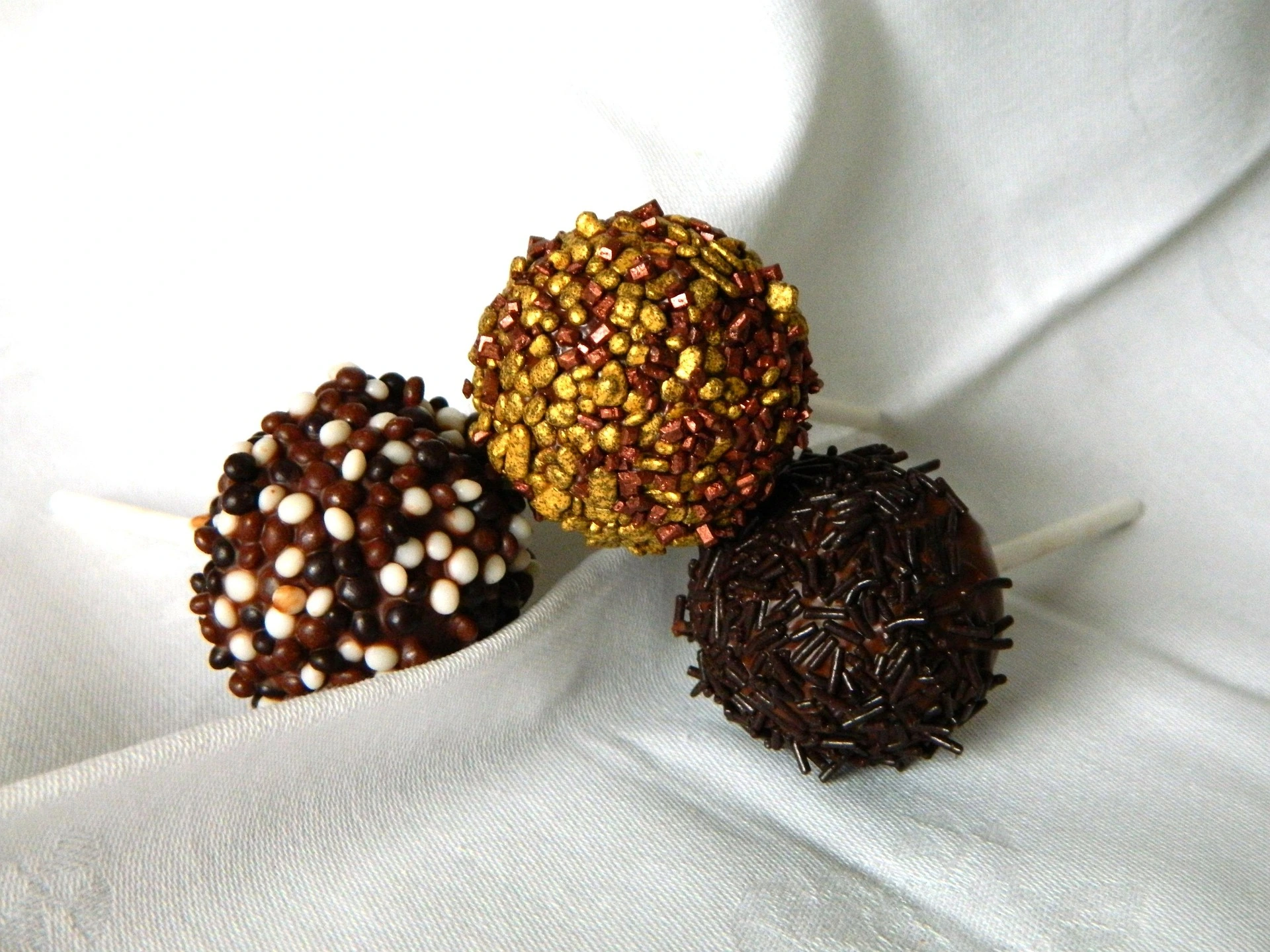Best Frosting for Cake Pops That Holds Shape Without Getting Greasy
Table of Contents
When you roll up cake pops for a birthday, wedding, or a blog photoshoot, the last thing you want is frosting that melts in your hands or leaves a greasy mess on the surface. You want frosting that keeps its shape, feels light to the touch, and stays delicious without turning oily. Learning to make the right frosting for cake pops gives you that polished, professional look while keeping every bite irresistible. With a few adjustments, you’ll have frosting that shapes smoothly and stays picture-perfect long after dipping and decorating.
Understanding the Role of Frosting in Cake Pops
Behind every perfectly round cake pop is stable frosting. It’s more than just sweetness — the frosting binds cake crumbs together, giving structure and shape.
Why Frosting Consistency Matters
When the consistency isn’t right, you either end up with stiff dough that cracks or sticky dough that refuses to hold its form. The ideal frosting has balance — soft enough to blend but firm enough to keep the shape intact.
What Makes Frosting Turn Greasy
Greasy frosting usually comes from one of three things:
- Overmixed butter or shortening that releases too much oil.
- Too much dairy or liquid added too quickly.
- A warm kitchen that melts the fat before it has time to stabilize.
Temperature plays a huge role. If your frosting warms up, the fat molecules separate, leaving that unpleasant oily layer. Keeping everything cool from start to finish can prevent it.
Choosing Ingredients That Keep Frosting Stable
Your ingredient quality directly impacts consistency. Choose high-grade ingredients that add structure rather than excess moisture or grease.
| Ingredient | Function | Alternative Options |
|---|---|---|
| Unsalted butter | Adds creaminess and flavor | Use part shortening to reduce greasiness |
| Powdered sugar | Builds structure and thickness | Use superfine sugar for smoother texture |
| Heavy cream or milk | Controls consistency | Add small amounts to avoid separation |
| Vanilla extract | Enhances flavor depth | Try almond or butter extract for variation |
Pro Tip: Keep your fat-to-sugar ratio around 1:3. This ratio ensures firmness without losing that creamy, melt-in-your-mouth texture.
Step-by-Step: How to Make Frosting for Cake Pops That Holds Shape
Getting your texture right depends on how you mix. Follow these steps carefully and you’ll have smooth, non-greasy frosting every time.
Step 1 – Cream the Base
Start by beating softened butter and shortening together on low speed. The goal isn’t to fluff it up yet but to create a unified, silky base. Working at low speed prevents trapped heat and air bubbles that could cause separation later.
Step 2 – Add Sugar Gradually
Add the powdered sugar about half a cup at a time. Mix until each portion has dissolved before adding the next. This slow incorporation helps the frosting thicken evenly while keeping the texture light and stable.
Step 3 – Add Liquid Cautiously
Now, drizzle in your milk or cream a tablespoon at a time. You’re not looking for runny frosting — stop as soon as it becomes thick but spreadable. It should hold a peak when you lift the whisk.
Step 4 – Chill Before Using
Pop the frosting into the refrigerator for 10 to 15 minutes. This quick chill firms it up so you can shape your cake pops without the frosting turning slick or oily. Cold frosting blends better with cake crumbs and locks in moisture without greasiness.
Pro Tips to Avoid Greasy Cake Pop Frosting
Even small changes can make or break your batch. Keep these tips in mind each time you make frosting:
- Use room-temperature ingredients, not melted butter.
- If your kitchen is warm, work near a cool surface or use a chilled mixing bowl.
- Make frosting in smaller batches so it doesn’t warm up too quickly.
- Add a few spoonfuls of cornstarch if the mixture feels too soft — it keeps grease at bay and adds texture.
- If the mixture splits, re-whip it slowly at a low speed until it comes back together.
These tips are particularly useful if you’re baking multiple flavors of cake pops in one session.
Common Frosting Mistakes (And How to Fix Them)
Too Soft
You’ll notice this if the frosting sinks when you form a ball. Fix it by adding 2–3 tablespoons of powdered sugar or chilling the frosting for 15 minutes.
Too Greasy
If your frosting looks shiny or oily, don’t panic. Blend in a tablespoon of meringue powder or swap out part of the butter for a neutral shortening the next time you prepare it. This helps absorb excess fat.
Too Dry
Crumbly frosting can be rescued with a teaspoon of milk or cream added one drop at a time. Gently stir, and you’ll see it come back to a creamy balance.
The secret is to make small, gradual adjustments. A slow fix always produces smoother, more stable frosting.
Variations of Frosting for Cake Pops
Changing your frosting flavor can transform your cake pops, but each variation has its quirks when it comes to texture.
Vanilla Buttercream Frosting
A favorite for beginners — it holds shape beautifully and mixes well with almost any cake flavor. Add a tiny pinch of salt to tone down the sweetness and round out the flavor.
Cream Cheese Frosting (Non-Greasy Version)
Use whipped cream cheese instead of block style. The lighter consistency and reduced fat content prevent separation. Combine it with powdered sugar and a stabilizer for extra firmness.
Chocolate Ganache Frosting
Ganache makes a rich base for decadent cake pops. Use a 2:1 ratio of chocolate to cream, let it cool, and chill until slightly thick. Its dense, velvety body adds luxury without oiliness.
When experimenting with new recipes, adjust your chilling time to maintain balance between firmness and flavor.
Storing and Handling Frosting
You can store leftover frosting in an airtight container for up to five days in the refrigerator. When you’re ready to use it again, let it sit at room temperature for about 15 minutes and give it a quick, light whip before mixing it into your cake crumbs.
Avoid leaving frosting in direct sunlight or near heat sources, especially when decorating. Small changes in temperature can quickly bring back the greasiness you worked hard to avoid.
Frequently Asked Questions About Frosting for Cake Pops
What’s the best frosting for cake pops that isn’t greasy?
A mix of butter and shortening blended with the right amount of sugar. It gives structure and smoothness without excess oil.
Can you use store-bought frosting for cake pops?
Yes — but most are too soft for shaping. Beat in extra powdered sugar to strengthen and thicken it before adding it to your crumbs.
How can frosting for cake pops hold shape in warm weather?
Add stabilizers like cornstarch or meringue powder and chill in between shaping. This prevents melting and maintains structure in humid conditions.
Does cream cheese frosting work well for cake pops?
It can if you use the whipped variety and keep it cool. Avoid block cream cheese, which tends to separate under heat.
How do I fix oily frosting once it starts separating?
Let it rest in the fridge for 10 minutes. When slightly firm, whip again on low speed to re-emulsify the fats.
Conclusion: Create Frosting That Feels as Good as It Looks
Frosting sets the foundation for every cake pop you make. The right version enhances flavor and stability so your pops look as stunning as they taste. By keeping your ingredients cool, measuring carefully, and letting the frosting chill between steps, you’ll always end up with a smooth, non-greasy base that shapes flawlessly.
So the next time you prepare cake pops, slow down, trust the process, and take pride in every swirl of frosting you create. Your pops will not only hold their shape but also reflect the care and creativity behind every bite.
Ready to bake your next batch?
Share your favorite frosting variations or post a photo of your finished cake pops — because every sweet creation deserves to be celebrated!

